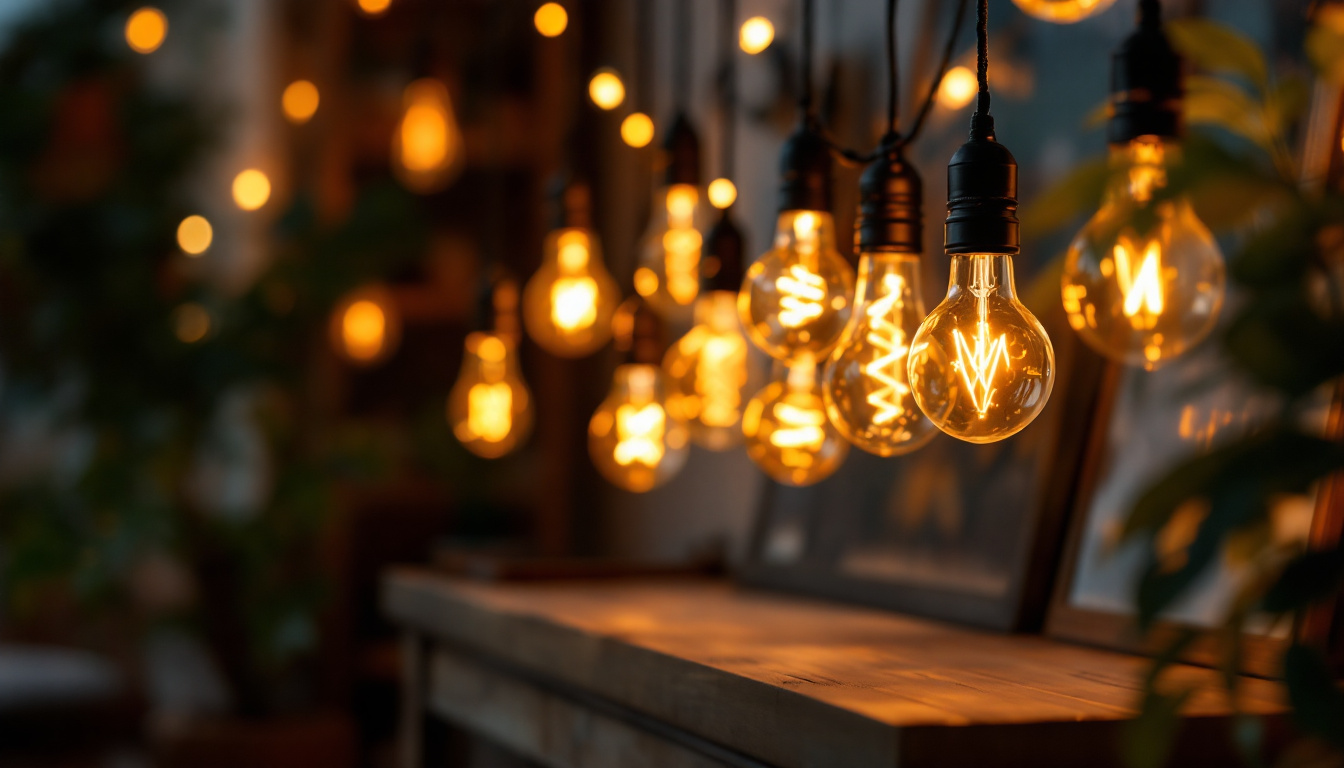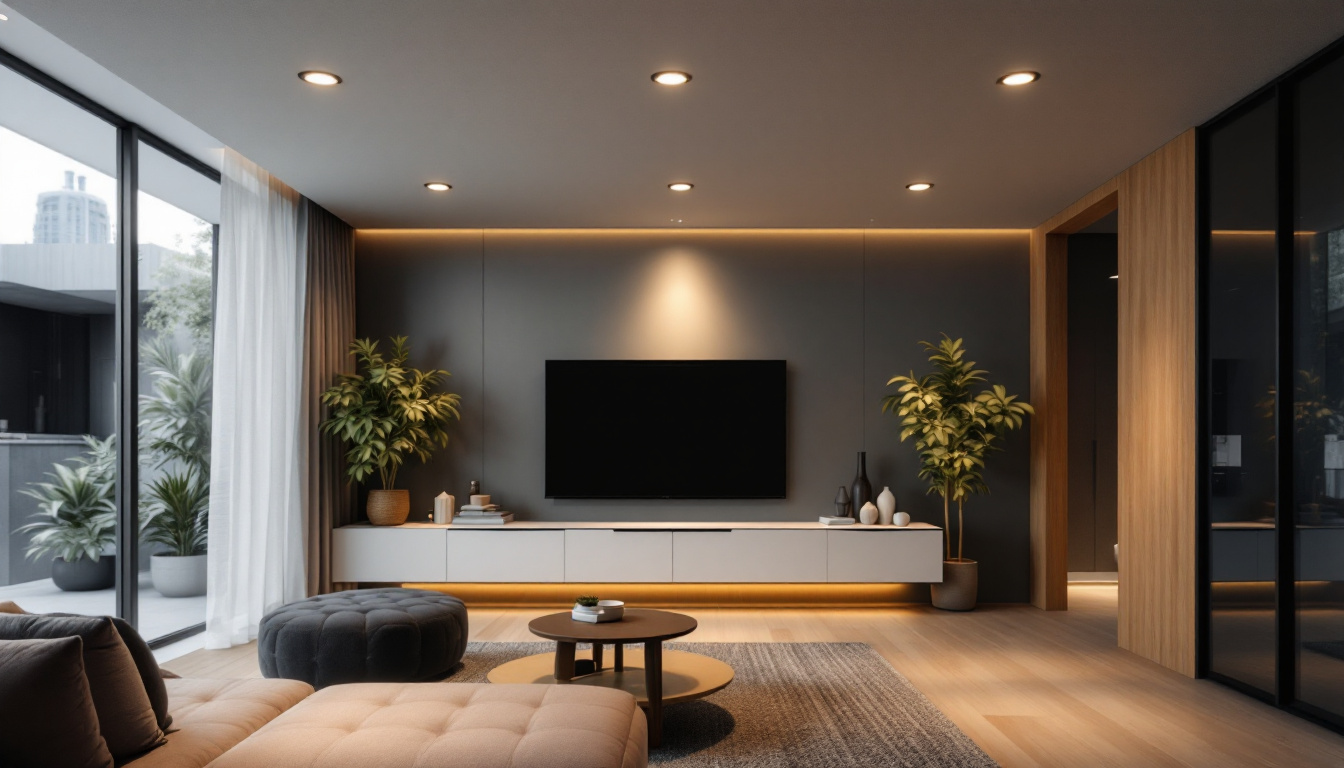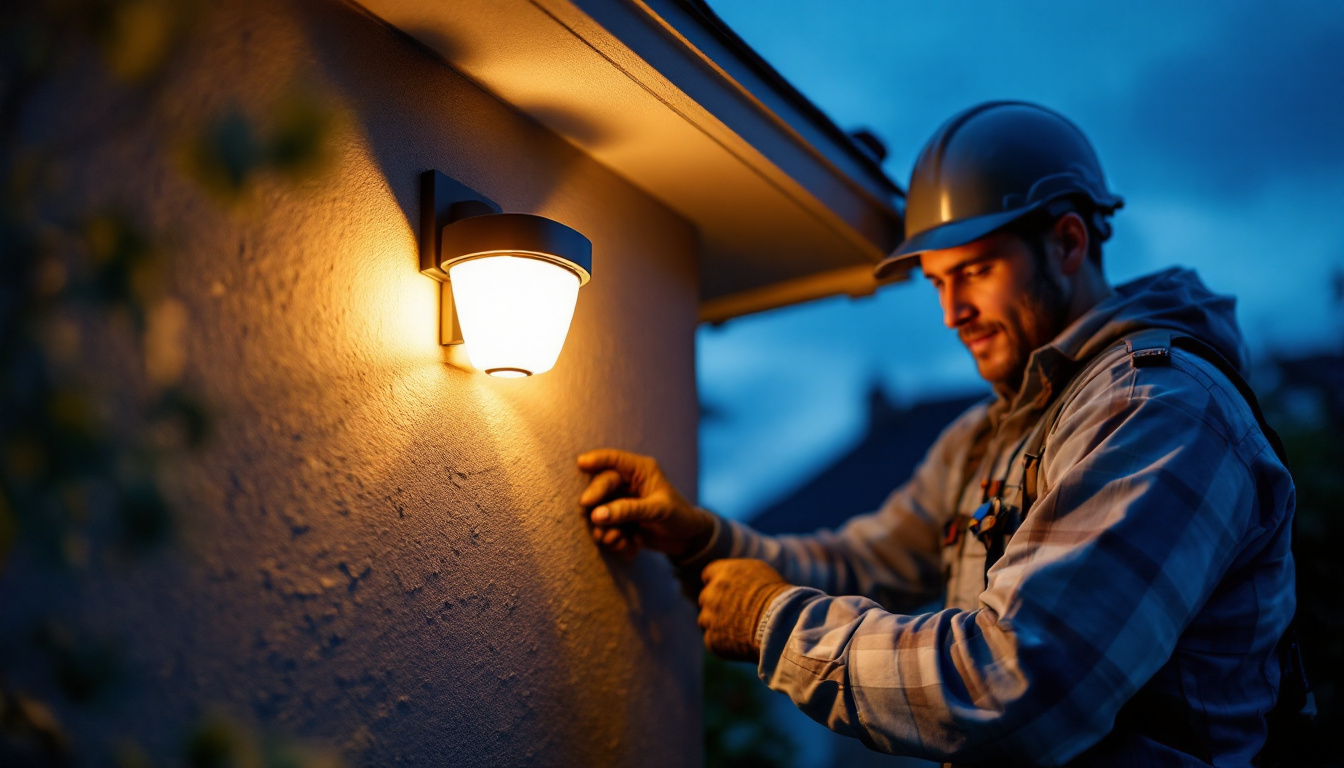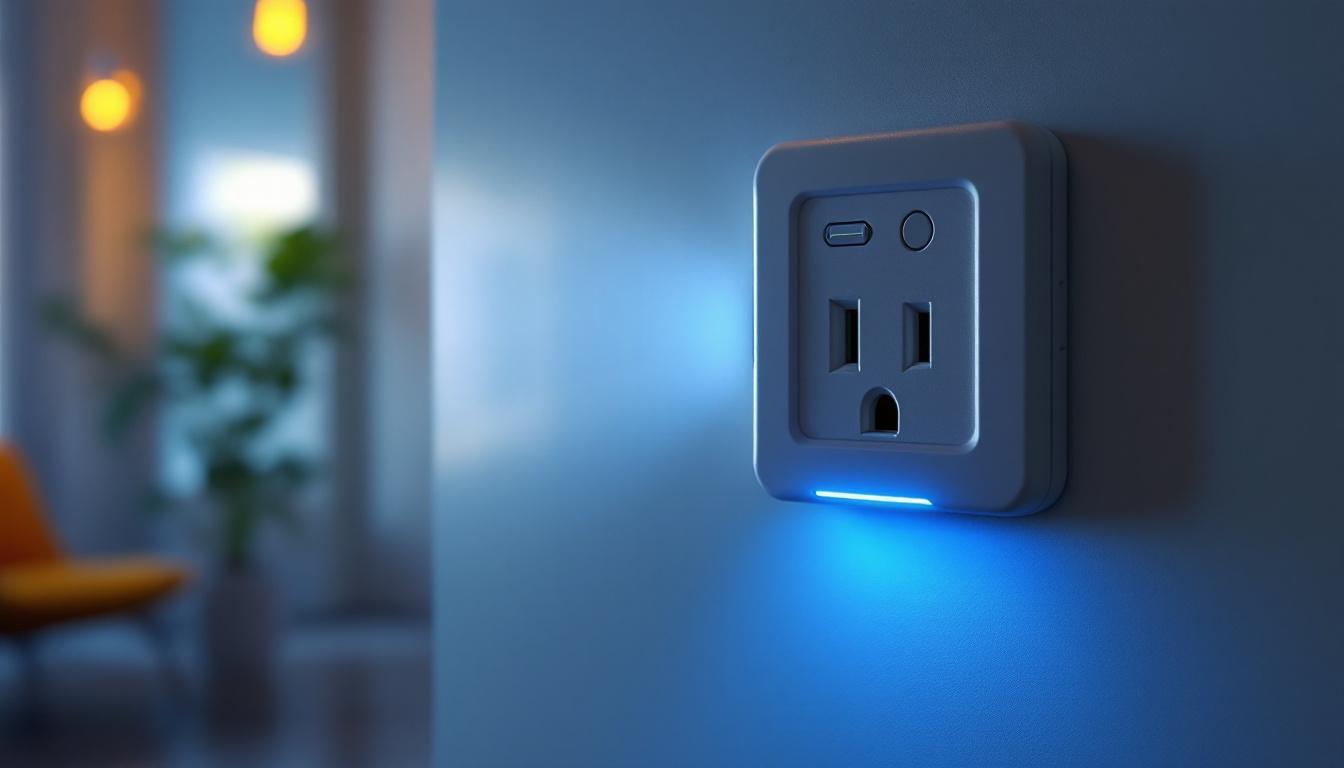
Lighting plays a pivotal role in enhancing the ambiance of any space, and for lighting contractors, understanding the nuances of bulb decoration light is essential. This article delves into the intricacies of decorative lighting, its types, applications, and the factors that contractors must consider when working with bulb decoration lights.
Bulb decoration lights are not just functional; they are also an aesthetic element that can transform spaces. These lights come in various forms, including string lights, pendant bulbs, and Decorative Fixtures, and are designed to create a specific atmosphere or highlight architectural features. The interplay of light and shadow can dramatically alter the perception of a room, making it feel larger, cozier, or more inviting, depending on the design choices made.
For lighting contractors, grasping the concept of bulb decoration light is crucial. It involves not only selecting the right type of bulb but also understanding how these lights interact with the surrounding environment. The right decorative bulb can elevate a simple room into a cozy retreat or a vibrant entertainment area. Furthermore, the color temperature of the bulbs—ranging from warm whites to cool blues—can significantly influence the mood of a space, making it essential for contractors to consider the psychological effects of lighting in their designs.
There are several types of bulb decoration lights available, each serving different purposes and aesthetics. Understanding these types can help contractors make informed decisions when advising clients. Additionally, the choice of bulb technology, such as LED versus incandescent, can impact energy efficiency and longevity, which are important factors for both sustainability and cost-effectiveness.
String lights are a popular choice for both indoor and outdoor settings. They are versatile and can be used to create a warm, inviting atmosphere. Available in various styles, including globe and fairy lights, string lights can be draped, hung, or wrapped around objects to add a whimsical touch. Their adaptability makes them perfect for special occasions, such as weddings and parties, as well as for everyday use in creating cozy nooks or enhancing outdoor patios. The ability to connect multiple strands also allows for creative customization, enabling homeowners to design their own unique lighting displays.
Pendant Lights are suspended from the ceiling and can serve as both functional and decorative elements. They come in various designs, from minimalist to ornate, allowing contractors to match the lighting to the client’s style. These lights are particularly effective in dining areas or kitchen islands, where they can provide focused illumination. Moreover, pendant lights can be used in clusters to create a striking visual impact, drawing the eye upward and adding dimension to the space. This layering of light not only enhances the aesthetic but also improves the overall functionality of the area.
Decorative fixtures encompass a wide range of lighting options, including chandeliers, wall sconces, and table lamps. These fixtures can serve as statement pieces in a room, drawing attention and enhancing the overall decor. Contractors should consider the scale and style of the fixture to ensure it complements the space. For instance, a grand chandelier can become the focal point of a high-ceilinged foyer, while sleek wall sconces can add subtle elegance to a hallway. Additionally, the materials used in these fixtures—such as glass, metal, or crystal—can further influence the ambiance, allowing for a tailored approach to lighting design that reflects the client’s personal taste and the intended atmosphere of the space.
Bulb decoration lights can be utilized in various settings, each with unique requirements and considerations. Understanding these applications will enable contractors to tailor their approach to meet client needs effectively.
In residential settings, decorative lighting is often used to create a cozy and inviting atmosphere. Living rooms, dining areas, and bedrooms benefit from well-placed decorative bulbs that enhance the overall aesthetic. Contractors should consider the layout and color scheme of the room when selecting bulbs to ensure a harmonious look. For instance, warm white bulbs can create a relaxing environment in bedrooms, while brighter, cooler tones may be more suitable for kitchens and workspaces. Additionally, the use of dimmers can allow homeowners to adjust the brightness according to the time of day or occasion, further enhancing the versatility of decorative lighting.
Moreover, decorative lighting can also be used to highlight architectural features or artwork within the home. By strategically placing bulbs to illuminate a piece of art or a unique architectural element, homeowners can draw attention to these focal points, adding depth and character to their living spaces. String lights, pendant fixtures, and wall sconces are just a few examples of how decorative lighting can be integrated into residential design to achieve a personalized and stylish look.
In commercial environments, decorative lighting can play a significant role in branding and customer experience. Restaurants, retail stores, and offices often use decorative lights to create a specific ambiance that aligns with their brand identity. Lighting contractors must work closely with business owners to understand their vision and implement lighting solutions that reflect their brand. For example, a trendy café may opt for vintage Edison bulbs to evoke a rustic charm, while a high-end boutique might choose sleek, modern fixtures to convey sophistication.
Furthermore, the strategic use of decorative lighting can influence customer behavior and enhance the shopping experience. Studies have shown that well-lit spaces can encourage customers to linger longer and explore more, ultimately leading to increased sales. In retail environments, accent lighting can be used to spotlight merchandise, guiding customers’ attention to featured products or promotions. This thoughtful approach to lighting design not only elevates the aesthetic appeal but also serves practical business objectives.
For events, decorative lighting is essential in setting the mood and creating memorable experiences. Whether it’s a wedding, corporate event, or festival, the right lighting can enhance the theme and atmosphere. Contractors should be adept at designing temporary lighting setups that can be easily installed and removed. For instance, using fairy lights can add a whimsical touch to outdoor weddings, while LED uplighting can transform a banquet hall into an elegant space for formal gatherings.
Additionally, the versatility of decorative lighting allows for creative expressions that can be tailored to specific themes or color palettes. For example, a summer festival might incorporate vibrant colored lights to create a lively atmosphere, while a winter gala could utilize soft, white lights to evoke a sense of warmth and coziness. By understanding the unique requirements of each event, contractors can craft lighting solutions that not only enhance the visual appeal but also contribute to the overall experience of attendees, making each event truly unforgettable.
When selecting bulb decoration lights, several factors come into play. Lighting contractors must consider these elements to ensure the best outcomes for their clients.
The color temperature of a bulb can significantly impact the ambiance of a space. Warm white light (around 2700K) creates a cozy and inviting atmosphere, making it ideal for residential settings. In contrast, cooler white light (around 4000K) is often preferred in commercial spaces for a more energetic and vibrant feel. Contractors should guide clients in selecting the appropriate color temperature based on the intended use of the space.
With growing concerns about energy consumption, energy-efficient bulbs are becoming increasingly popular. LED bulbs, for instance, offer significant energy savings compared to traditional incandescent bulbs. Contractors should educate clients about the benefits of energy-efficient lighting, including lower electricity bills and longer lifespan, which ultimately leads to reduced maintenance costs.
The design of the bulb and fixture itself is a crucial consideration. Decorative bulbs come in various shapes, sizes, and finishes, allowing for customization to fit the client’s vision. Contractors should encourage clients to consider how the lighting will complement the existing decor and architecture of the space. A well-chosen decorative bulb can become a focal point in a room, enhancing its overall appeal.
Proper installation of bulb decoration lights is essential for achieving the desired effect. Here are some tips that contractors should keep in mind during the installation process.
Before installation, it’s crucial to plan the layout of the lighting. This involves determining the best locations for fixtures and bulbs to achieve optimal illumination and aesthetics. Contractors should consider factors such as the height of ceilings, the purpose of the space, and the overall design theme.
Safety should always be a top priority when installing decorative lighting. Contractors must ensure that all wiring is up to code and that fixtures are securely mounted. It’s also important to use the appropriate wattage for bulbs to prevent overheating and potential hazards. Regularly checking the electrical connections can help maintain safety and functionality.
After installation, testing the lighting is essential to ensure it meets the client’s expectations. Contractors should check for any flickering or dimming and make necessary adjustments to the positioning of fixtures and bulbs. This step is crucial in ensuring that the lighting enhances the space as intended.
Regular maintenance is key to ensuring the longevity and performance of decorative lighting. Contractors should provide clients with guidance on how to care for their lighting systems effectively.
Dust and dirt can accumulate on decorative bulbs and fixtures, diminishing their brightness and aesthetic appeal. Regular cleaning is necessary to maintain their appearance and functionality. Contractors can recommend suitable cleaning methods and products that won’t damage the fixtures.
Over time, bulbs will need to be replaced due to burnout or decreased performance. Contractors should educate clients on how to identify when a bulb needs replacement and the importance of using the correct type of bulb for their fixtures. Providing a schedule for bulb replacement can help ensure consistent lighting quality.
As lighting technology continues to evolve, contractors should stay informed about new products and innovations in decorative lighting. Upgrading to newer, more efficient technologies can enhance the performance and aesthetics of existing lighting systems. Educating clients about the benefits of these upgrades can lead to improved satisfaction and energy savings.
Bulb decoration lights are an essential aspect of lighting design that can significantly impact the aesthetics and functionality of a space. For lighting contractors, understanding the various types, applications, and considerations surrounding these lights is crucial for delivering exceptional service to clients.
By staying informed about trends, technologies, and best practices in decorative lighting, contractors can enhance their expertise and provide valuable insights to their clients. Whether working in residential, commercial, or event settings, the ability to select and install the right decorative lighting can elevate any project and leave a lasting impression.
Ultimately, the goal of any lighting contractor should be to create spaces that not only meet the practical needs of their clients but also inspire and delight. With the right knowledge and approach, bulb decoration lights can be a powerful tool in achieving that vision.
Ready to bring your lighting designs to life with the finest bulb decoration lights? At LumenWholesale, we provide lighting contractors like you with the highest quality, spec-grade lighting products at prices that can’t be beaten. Say goodbye to local distributor markups and hello to a vast selection of reliable, high-performance lighting that meets the most rigorous industry standards. Plus, with free shipping on bulk orders, you can stock up on premium lighting solutions without worrying about hidden fees. Elevate your lighting projects with the perfect combination of quality, value, and convenience. Discover Wholesale Lighting at the Best Value today and make every space shine with LumenWholesale.

Discover innovative strategies from top lighting contractors for installing 4-inch LED recessed lights.

Discover how solar powered security lights can give lighting contractors a competitive edge in winning more bids.

Discover the essential insights into LED light outlets as we address the most common questions posed by lighting contractors.

Discover essential tips and strategies for lighting contractors to enhance their sales of light fixtures.